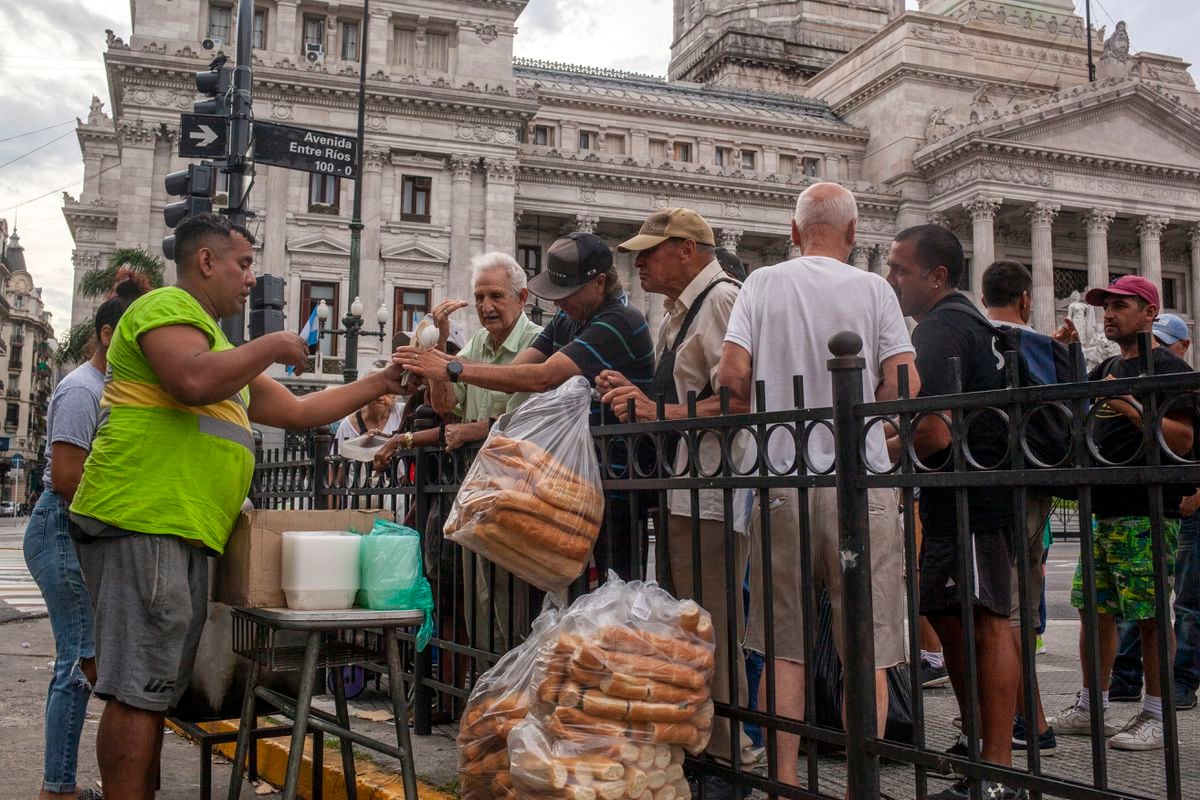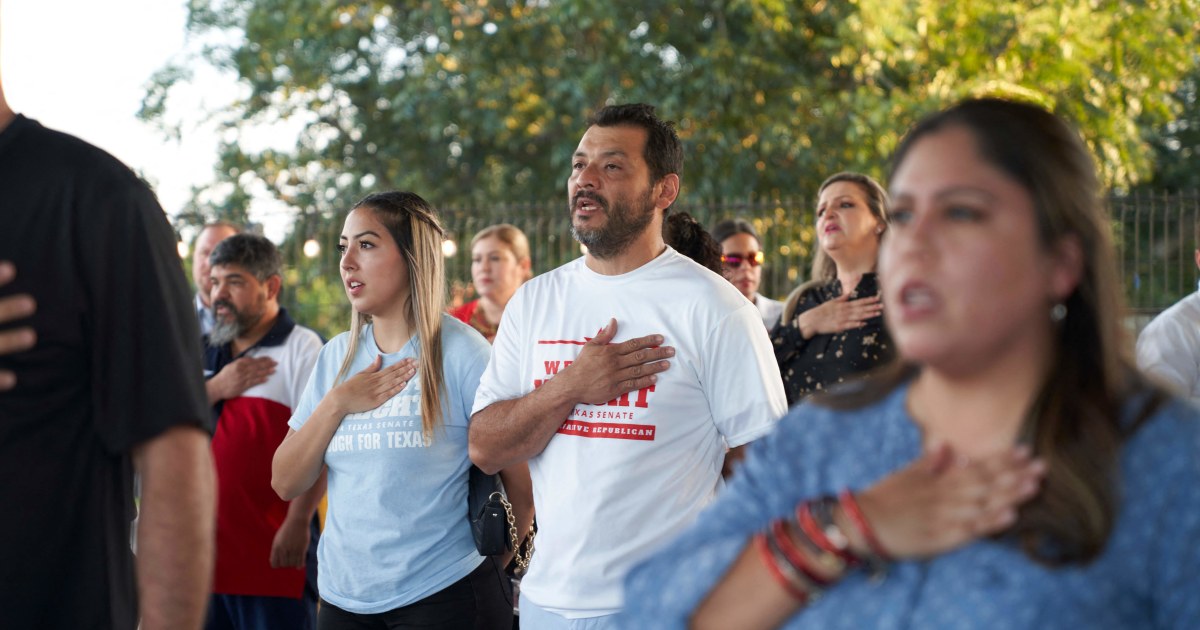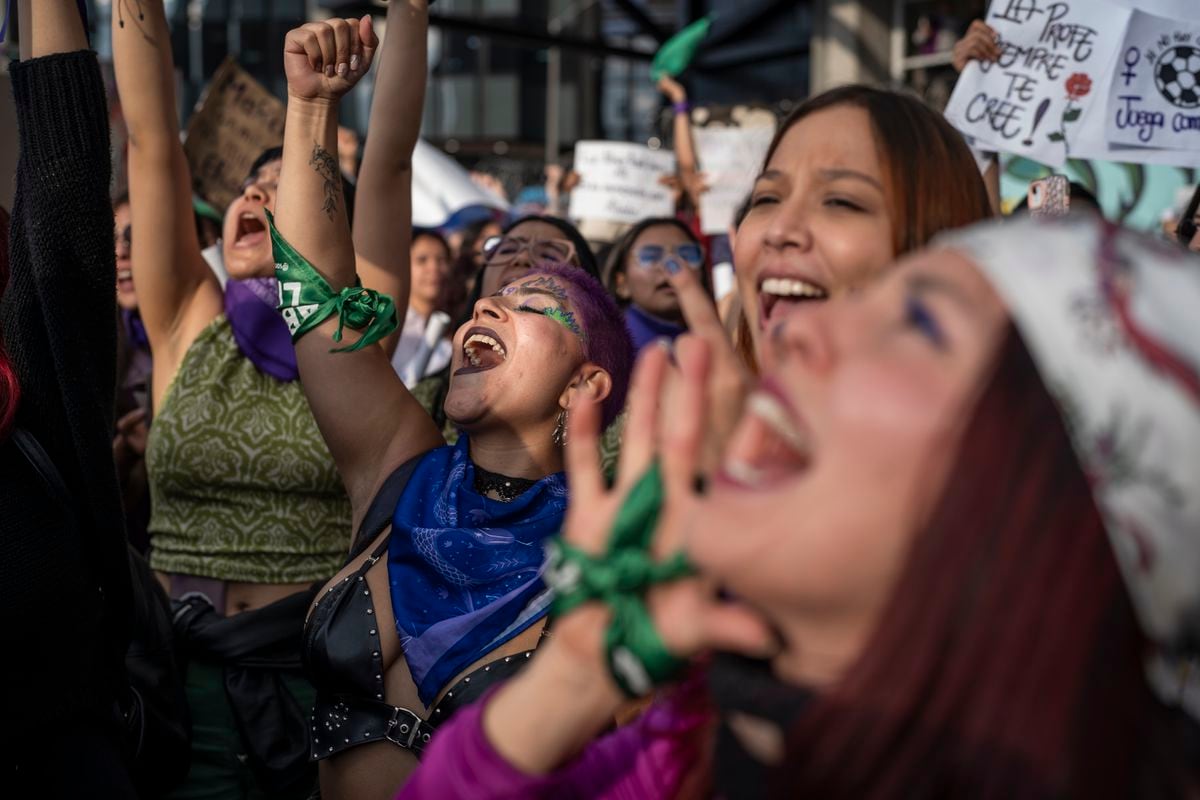Latin America: countries with the most overcrowding in prisons 1:12
(CNN Spanish) -
Prisoners crowded into confined spaces, poor infrastructure, lack of access to medicines and other basic supplies.
These scenes were seen recently in the prisons of Ecuador, but they are repeated throughout Latin America.
And increasingly they lead to episodes of violence.
Ecuador is not even the country with the highest prison overcrowding in the region.
According to data from World Prison Brief, a database operating within the University of London, Haiti has the worst overcrowding in its prisons, with a prison occupancy of 454.4% compared to officially reported capacity, according to with CNN analysis.
Guatemala is followed, with an occupation of 367.2% in its prisons;
Bolivia, with 269.9% occupancy;
Grenada, with 233.8%;
Peru, with 212.2% and Honduras, with 204.5%.
Ecuador enters the ranking lower, with an occupancy of 133.2% in its prisons.
According to a United Nations (UN) report published in July, the pandemic has further complicated the consequences of prison overcrowding.
advertising
Although in some countries, given the difficulty of implementing preventive measures in overcrowded prisons, it was decided "to temporarily release a large number of people in custody, in particular those convicted of non-violent crimes," according to the UN, it was also they took restrictive measures that affect the internal life of the prisons.
In order to prevent the spread of COVID-19, "some prisons limited recreation time, work opportunities and visitation rights, all essential components of rehabilitation programs," says the UN report.
According to the United Nations Standard Minimum Rules for the Treatment of Prisoners, known as the Nelson Mandela Rules, in a prison, “when the dormitories are cells or individual rooms, each of these will be occupied by a single inmate.
If for special reasons, such as the temporary excess of the prison population, it is essential that the central prison administration make exceptions to this rule, it will avoid accommodating two inmates in a single cell or room ”.
The Mandela Rules also establish that “the accommodation premises of the inmates, and especially the dormitories, must comply with all hygiene standards, particularly with regard to climatic conditions and, in particular, the volume of air, the minimum surface area , lighting, heating and ventilation ”.
Overcrowding in prisons prevents compliance with these and many other basic standards that make the treatment of a detainee worthy.
An inmate dies from a bullet impact inside a jail in Ecuador
But, how does this influence the acts of violence?
Experts consulted by CNN considered that overcrowding can facilitate the outbreak of internal conflicts, but stressed that it is just the tip of the iceberg of what happens in Latin American prisons.
Prisons or "human warehouses"?
"We have reached the point of locking up under the vision of punishing and we do not realize that this type of confinement generates higher levels of crime," Oswaldo Samayoa Sosa, a human rights and criminal law consultant and professor at the University of San Carlos de Guatemala and the Rafael Landívar University of Guatemala.
"I don't know whether to call them prisons or human warehouses," he said, referring to the prisons in the region.
For Samayoa Sosa, the main conflicts facing the Latin American prison system are the belief that "more jail generates more security" and "the too slow times of the judicial system."
This leads to an increase in incarceration rates, at the same time that large proportions of the Latin American prison population are pre-trial prisoners, that is, they have not yet received a sentence.
And the overcrowding in the lockdown centers becomes difficult to control.
"Prisons become centers of operation outside organized crime, with very high levels of violence," explained the specialist, and gave as an example the situation of prisons in Central America.
“In Guatemala a few years ago a grenade exploded inside a prison to kill the person who ran the prisons.
Gangs have these kinds of lawsuits.
And the authorities, due to corruption or fear, end up giving control to the criminals ”.
Gustavo Javier Fondevila, doctor in law and member of the Center for Economic Research and Teaching (CIDE), in Mexico City, expressed himself along the same lines.
"What happens with overcrowding is that it makes the general prison conditions worse," he said in dialogue with CNN.
And he added: "Prison is used as the only solution, and we have not prepared the prisons for that."
“When you cannot guarantee security in a prison, illegal markets are formed inside.
The State does not control the internal life of the prison and ends up in the hands of these gangs, ”said the specialist.
For Fondevila, in prisons "the State is the first absent, when it should be the main person in charge."
Luis Vergara Cisterna, lawyer and researcher at the Center for Citizen Security Studies at the University of Chile, in Santiago, also emphasized this point.
“The presence of the State in prisons has to be at all levels.
If the state is not present, this encourages institutional and peer violence.
Thus, the law of the strongest governs, ”Vergara Cisterna explained to CNN.
What can be done to improve the situation in prisons?
“When it comes to overcrowding, in general the proposal that comes up is to build more prisons.
I don't think it's the solution, ”said Vergara Cisterna.
“It is not about building more prisons, but about influencing criminal policy.
How many people do we send to prisons?
How we face crime should be a matter on the public agenda ”.
On the other hand, the Chilean researcher highlighted the importance of management, for which he considered it essential to generate data.
"We have to know how many people are in jail, what the profile of the detainees is like," he said.
Vergara Cisterna, who was previously a lawyer for the Chilean Ministry of Justice and the Gendarmerie, stressed the need to train prison staff, both in theory and in practice.
For his part, Samayoa Sosa said that it is essential to work on prevention.
“You have to start working outside the prisons.
Most of the people in the maras or gangs are teenagers.
A prior approach, preventing these criminal groups from entering, reduces the power structure of these organizations within the prisons ”.
This is the situation around the prisons of Ecuador 3:10
Meanwhile, Fondevila pointed out that "it is complex to think of an ideal prison model."
"As a general recommendation, I believe that justice must be sought to incorporate alternative measures to the prison, without a doubt," he said.
And he added that it is important to promote labor, educational and sports workshops, as well as the meeting of detainees with their families should also be promoted.
“Prisons are no longer isolated places.
They are involved in society and the problem returns.
If we do not act to improve the system, we will have more Equators in the coming years ”, concluded Fondevila.
prisons in Latin America





/cloudfront-eu-central-1.images.arcpublishing.com/prisa/ETGSMPG4ZNFJFFLVSLKB3DWPSQ.jpg)



/cloudfront-eu-central-1.images.arcpublishing.com/prisa/NYBERFPPHVEJVER4FIRIEAGGX4.jpg)